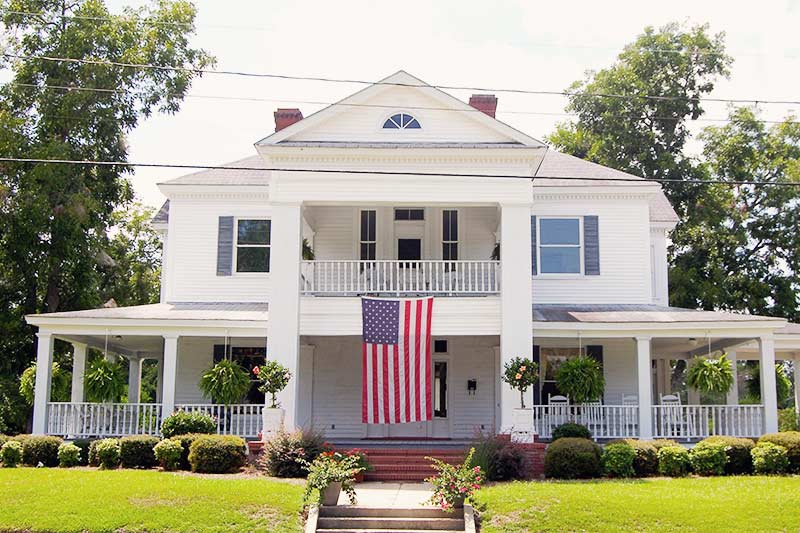

The British controlled Georgia and the Americans South Carolina. In early February, 1779, the Southern Armies of the United States and Great Britain were facing across the Savannah River on a battle line reaching from Savannah to the Broad River above Augusta. The house was restored by the Brier Creek Chapter of the DAR. General Sherman camped at the Goodall house overnight in his famous march to the sea. It was a handsome house at one time with gracious proportions and pleasing landscaping. The house may be viewed down a long avenue of moss-draped trees. The Georgia pine used by the builder toughened long ago to rock-hardness. The sturdy frame edifice was made of hand-hewed logs, with matched shoulders and hand-whittled peg construction. Dell of Savannah, a retired Methodist Minister and has come to be known as the Dell-Goodall home. After 1870 the Goodall house belonged to the family of Dr. The curse was fulfilled by a variety of means, and the county seat was moved to Sylvania in 1847 after the town was virtually deserted. There were unexplained fires, mysterious winds that ripped roofs from houses, flash floods that emanated from the usually quiet creek. Within 20 years the town had ceased to exist. According to history, this is due to a curse placed upon the town by Lorenzo Dow, an itinerant Methodist minister, who was run out of town by the “Rowdies.” After being befriended by Seaborn Goodall, who gave Dow shelter for the night, the minister stopped on the bridge the next morning and asked God to place a curse upon the town with the exception of the Goodall home. The survival of the house is significant because it is the only structure left standing in Old Jacksonborough. Jacksonborough was at that time the county seat of Screven County. The house was built in 1815 for Seaborn Goodall, a prominent Jacksonborough citizen, who was clerk of Superior Court.

The Goodall home is located about six miles north of Sylvania on U.


 0 kommentar(er)
0 kommentar(er)
